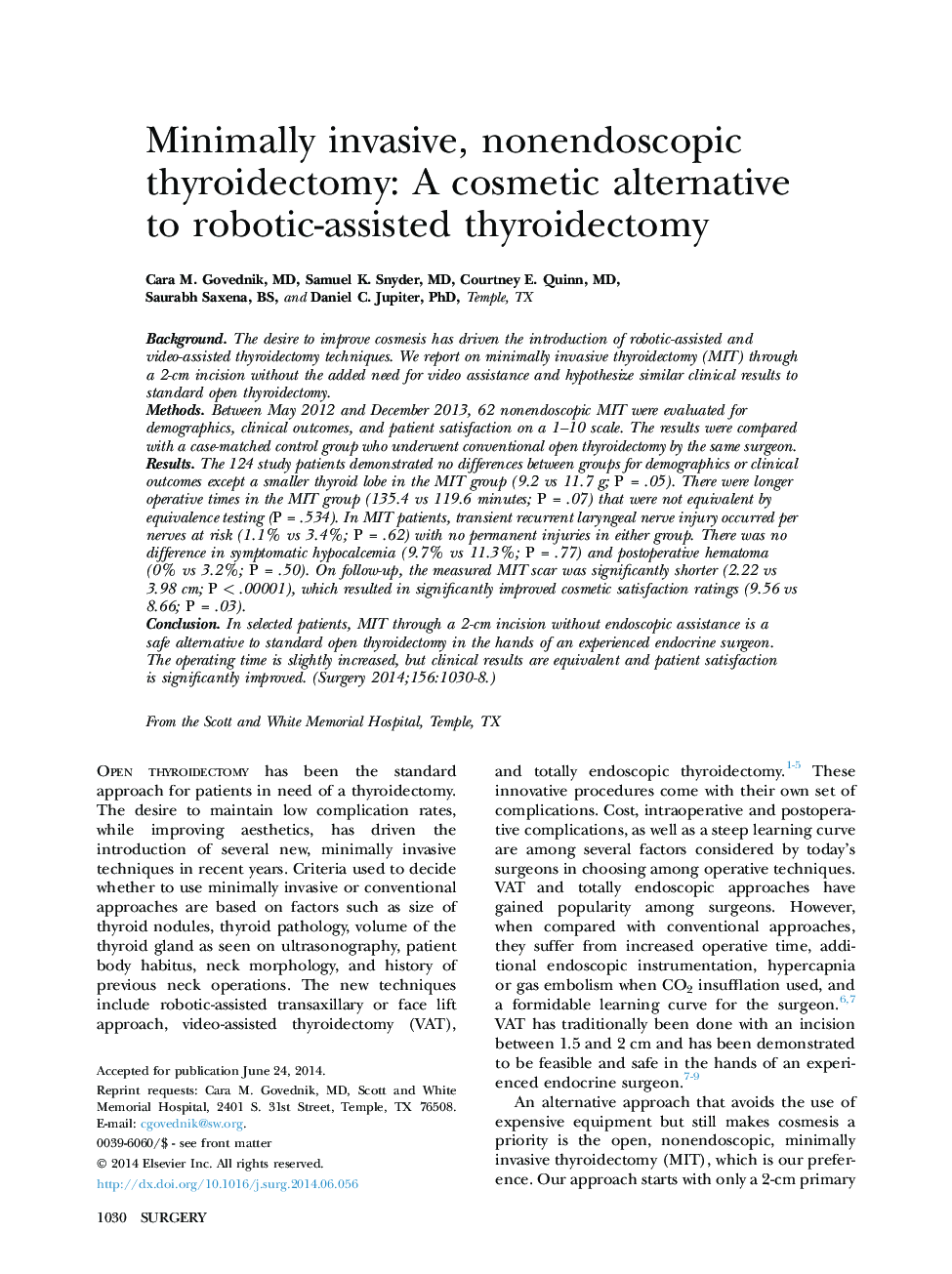| Article ID | Journal | Published Year | Pages | File Type |
|---|---|---|---|---|
| 4307669 | Surgery | 2014 | 9 Pages |
BackgroundThe desire to improve cosmesis has driven the introduction of robotic-assisted and video-assisted thyroidectomy techniques. We report on minimally invasive thyroidectomy (MIT) through a 2-cm incision without the added need for video assistance and hypothesize similar clinical results to standard open thyroidectomy.MethodsBetween May 2012 and December 2013, 62 nonendoscopic MIT were evaluated for demographics, clinical outcomes, and patient satisfaction on a 1–10 scale. The results were compared with a case-matched control group who underwent conventional open thyroidectomy by the same surgeon.ResultsThe 124 study patients demonstrated no differences between groups for demographics or clinical outcomes except a smaller thyroid lobe in the MIT group (9.2 vs 11.7 g; P = .05). There were longer operative times in the MIT group (135.4 vs 119.6 minutes; P = .07) that were not equivalent by equivalence testing (P = .534). In MIT patients, transient recurrent laryngeal nerve injury occurred per nerves at risk (1.1% vs 3.4%; P = .62) with no permanent injuries in either group. There was no difference in symptomatic hypocalcemia (9.7% vs 11.3%; P = .77) and postoperative hematoma (0% vs 3.2%; P = .50). On follow-up, the measured MIT scar was significantly shorter (2.22 vs 3.98 cm; P < .00001), which resulted in significantly improved cosmetic satisfaction ratings (9.56 vs 8.66; P = .03).ConclusionIn selected patients, MIT through a 2-cm incision without endoscopic assistance is a safe alternative to standard open thyroidectomy in the hands of an experienced endocrine surgeon. The operating time is slightly increased, but clinical results are equivalent and patient satisfaction is significantly improved.
